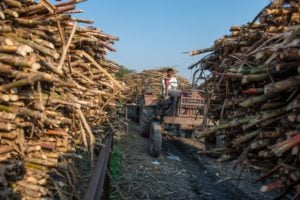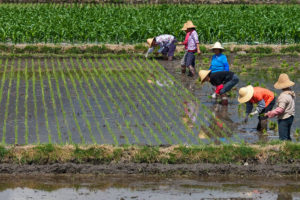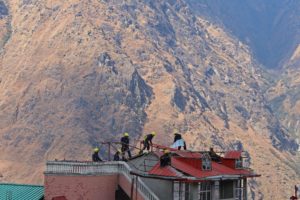India has delivered a message to Pakistan that it wants to modify the Indus Waters Treaty (IWT). The treaty was signed between the two countries in 1960, with the World Bank as guarantor, to regulate use of their shared rivers. As reported by The Wire, the demand from India is for Pakistan “to enter into inter-governmental negotiations within 90 days to rectify the material breach of IWT. This process would also update IWT to incorporate the lessons learned over the last 62 years.”
This is the latest salvo in a long saga of lawfare in which India and Pakistan have been embroiled since 1988. The initial disagreement began when India started planning the Kishanganga hydropower project on a tributary of the Jhelum River. The Jhelum is one of the three western tributaries of the Indus whose waters are supposed to be for Pakistan’s use under the treaty. India is allowed to build projects but not to limit water flow on these rivers – whereas it can do as it likes with the three eastern tributaries of the Indus. Under the Indus Waters Treaty, India has to notify Pakistan in advance of the designs of any project it builds on the western tributaries, in case they impede water flow into Pakistan.
In 1960, Pakistan and India signed an agreement to regulate the use of their shared rivers.
The 62-year-old treaty on the Indus river system gives control of the three “eastern” rivers (the Beas, Ravi and Sutlej) to India and the three “western” rivers (the Indus, Chenab and Jhelum) to Pakistan.
India is allowed to use waters from the western rivers for domestic purposes, irrigation, and hydropower projects as long as it does not build storage capacity that limits the flow of water.
Pakistan objected to the Kishanganga project because the design envisaged the diversion of water from one tributary of the Jhelum to another. Meanwhile, the Pakistani government had its own plans to build a hydropower plant on the Neelum river (as the Kishanganga is called in Pakistan) – the Neelum Jhelum Project (NJP). The displacement that would occur from the 330 MW Kishanganga project, while not reducing the overall flow of water into Pakistan, would limit the flow to the envisaged NJP.
Pakistan only approved the design of its own project in 1989 – a year after India had started its survey work on the Kishanganga project. Construction began in 2007, and the Neelum Jhelum Project was completed in 2018. On the Indian side, work on tunnels began in 2004, while construction of the dam started in 2007. India agreed to Pakistan’s demand of assembling a Court of Arbitration (CoA) – the one and only time such a court has been held – in 2010, and work on the Indian side was paused in 2011 until the CoA’s decision in 2013.
Pakistan’s contention in this case was that the NJP would be unable to function because India would channel water for its projects away from the river and then release it downstream of the NJP site. India countered that it was sticking to the terms of the IWT because it was not holding back any water from Pakistan, and that its projects predated the NJP.
In its 2013 decision, the CoA largely found against Pakistan’s objections but asked India to make some modifications to its dam designs.
Dispute resolution mechanisms of the Indus Waters Treaty
When the IWT was signed in 1960, an Indus River Commission was established, with commissioners from India and Pakistan. The treaty has two dispute resolution mechanisms for situations when India and Pakistan cannot agree and the issue has to go beyond the commissioners: the appointment of a Neutral Expert and a Court of Arbitration. As the World Bank explains, “questions” are handled by the Commission; “differences” are to be resolved by a Neutral Expert; and “disputes” are to be referred to the Court of Arbitration, a seven-member arbitral tribunal.
During the CoA hearing, India had argued another point, that a CoA should only be created after an issue had first been dealt with by a Neutral Expert. The 2013 CoA verdict rejected this. It went further and said that a dispute obviously existed, and the court could not “accept that India’s current position… that the Second Dispute is a matter for a neutral expert… even if India were now to request the appointment of such an expert.” This is because India had insisted that no “difference” existed, and while a Neutral Expert was appointed to deal with “differences”, only a CoA could deal with “disputes”.
After the ruling, India completed the Kishanganga hydropower project, and it went online in 2018. Pakistan alleged that India had not followed the design specifications mandated by the 2013 ruling, and when India decided to commission the (much larger) 850 MW Ratle hydropower project in 2013 (the actual allocation of funds only happened in 2021) on the Chenab, Pakistan decided to request a Neutral Expert to deal with the issue in 2015. In 2016 it withdrew that request, and instead, on 22 August 2016 asked the World Bank to form a CoA to deal with the issue.
India responded on 4 October 2016 by requesting a Neutral Expert be appointed to deal with the dispute. This put the World Bank, as the guarantor of the treaty, in a quandary. The treaty explicitly states that a CoA, or other mediation efforts, do not apply to a “difference” that is currently being addressed by a Neutral Expert. Nonetheless, the IWT does not empower the World Bank to reject a request for a CoA if a Neutral Expert is not already examining the “difference”, and none had been appointed. The World Bank’s role is strictly procedural, and it could not reject either request. And yet having two procedures underway on the same dispute seemed liable to act at cross purposes.
In a bid to manage the contradictions, the World Bank paused both mechanisms, initially until January 2017, and then for years. Throughout this time, India has argued that the creation of two processes endangered the treaty itself, and that a Neutral Expert should be appointed first.
No progress was made, especially as India-Pakistan relations have been in embroiled in hostility. On 6 April 2022, after numerous meetings and high-level talks, the World Bank decided to restart both conflict resolution processes, arguing that, while “concerns of the Parties that carrying out the two appointments concurrently poses practical and legal risks… the lack of success in finding an acceptable solution over the past five years is also a risk to the Treaty itself.”
A worrying escalation
Now, by raising the issue again, India has lobbed the ball squarely into Pakistan’s court, arguing that it is Pakistan’s intransigence that is to blame for the two concurrent processes. As the upper riparian nation, India enjoys a stronger negotiating position. Its construction activities can restrict, or divert, water flowing to Pakistan, while Pakistan cannot affect water upstream in India. Its only recourse is to the IWT.
But this style of hydro diplomacy may have significant regional consequences beyond the Indus basin. Most importantly, India itself is a lower riparian nation in other important transboundary river basins. Much concern has been voiced in India about the building of Chinese dams upstream on the Brahmaputra (known as the Yarlung Tsangpo as it flows through Tibet) – although most of the Brahmaputra’s water as it flows through India and then Bangladesh comes from tributaries in India and Bhutan. This is not true of the Ganga. The Ghaghara, which flows into India from Nepal, is a major tributary, and its water arrives in Bihar where much of the upstream Ganga water within India has been used up, or diverted by dams. China is also building a dam on the Mabja Zangbo River, upstream of Nepal, which feeds into the Ghaghara.
A treaty is only as good as its willing implementation by signatories
Over the last few years, China has asserted, largely in relation to the Mekong Basin, that the needs and concerns of the upper riparian country should be accommodated by lower riparian countries. This ‘reciprocity’ is at odds with the language of the Convention on the Law of the Non-Navigational Uses of International Watercourses, 1997 (to which China, India, and Pakistan are not signatories), which states that “Watercourse States shall, in utilizing an international watercourse in their territories, take all appropriate measures to prevent the causing of significant harm to other watercourse States.”
The IWT was negotiated on the same principles as the UN Convention, even if neither country became a signatory to the Convention. But India’s current strategy is closer to that of China in the Mekong, asserting the upper riparian state’s power to force accommodation by countries downstream. Putting aside the merits of the case itself – as in the earlier CoA, there was a good chance it would be decided in India’s favour – the question is where this nationalist style of hydrodiplomacy will lead, and what it means for the estimated 1.5 billion people that depend on the shared river basins of the Himalayas.
Rivers do not respect borders, nor can the health of a transboundary basin be managed merely by upper riparian countries. The IWT may survive this crisis, since it can only be abrogated or modified by agreement of both countries, something that the Pakistani attorney general referred to in response to the news stories last week. Nonetheless, a treaty is only as good as its willing implementation by signatories. If, instead of engendering cooperation, a treaty is seen as yet another avenue where hostilities between states is acted out, it will make transboundary cooperation more difficult, not less. And this will make all of the people living along these river basins, of whatever nationality, much more vulnerable as the climate crisis deepens.
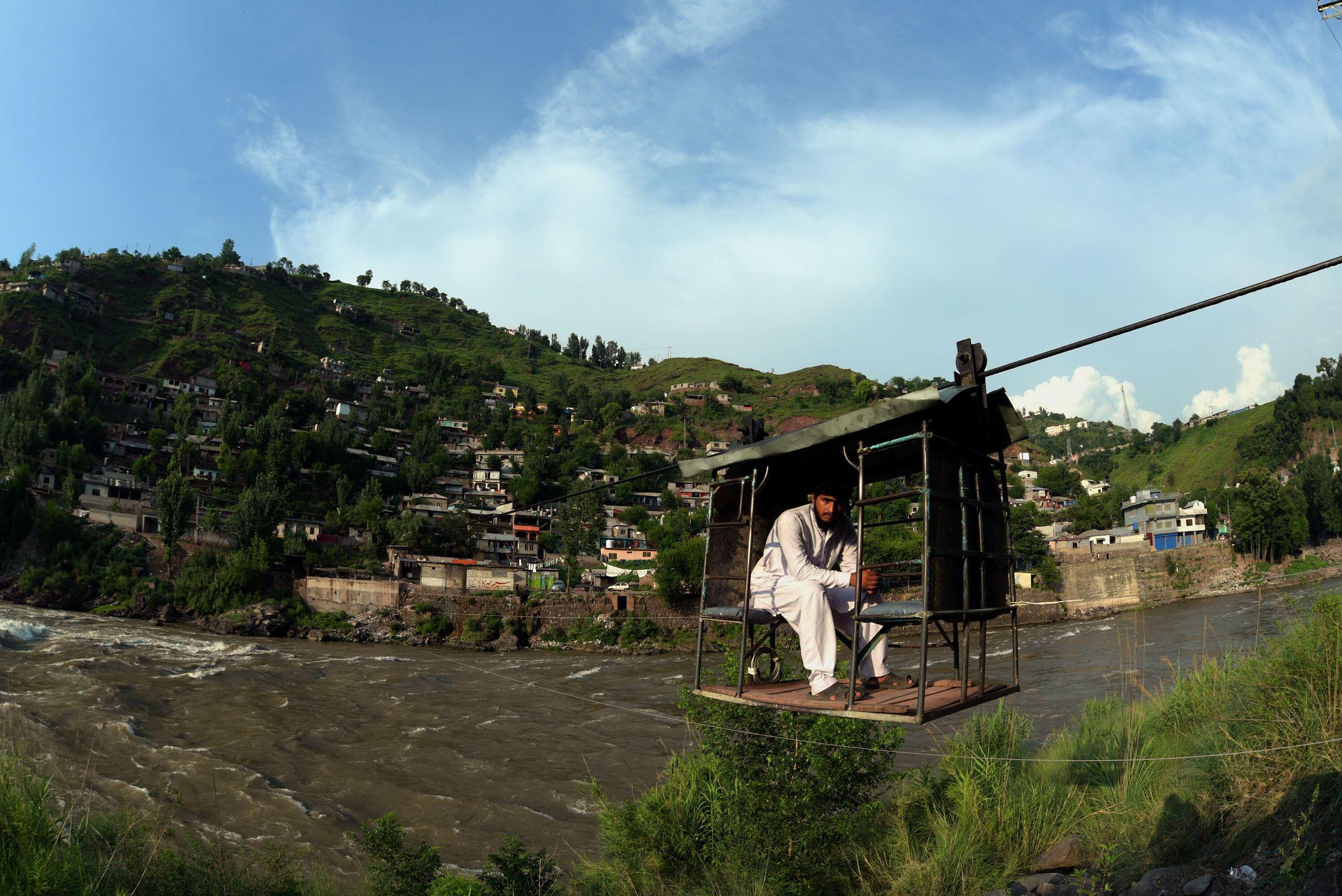

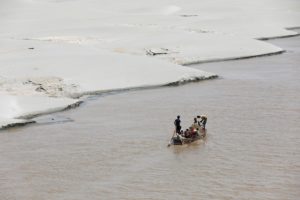
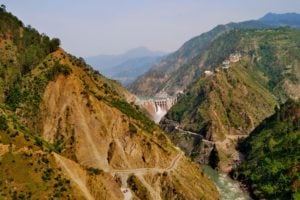

![A solitary woman, covered in traditional head scarf, walking towards the Indus River near Skardu in Northern Pakistan [image: Alamy]](https://dialogue.earth/content/uploads/2021/05/2BEJNY8-300x200.jpg)
